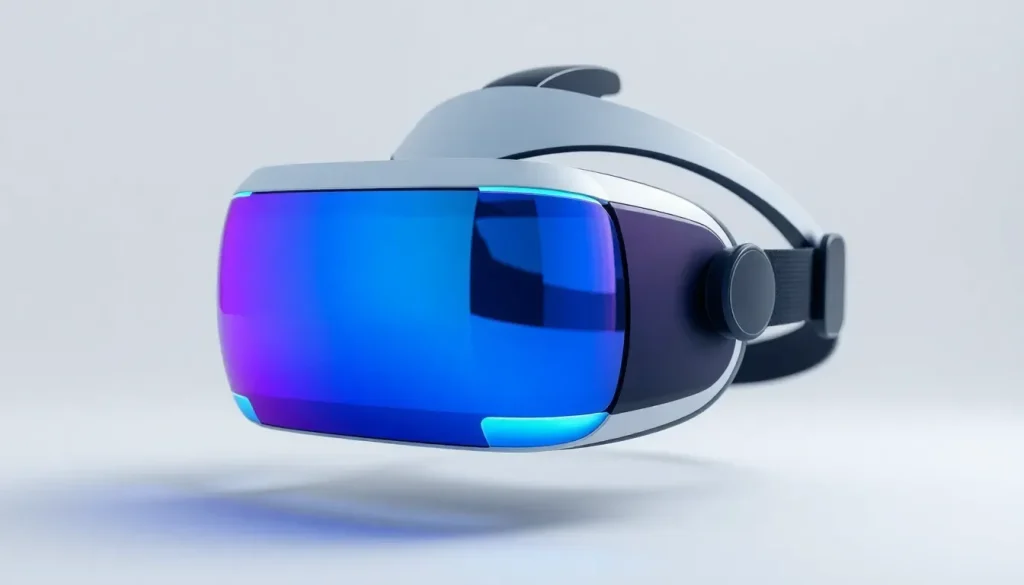Samsung Galaxy XR Headset Competes with Apple's M5 Vision Pro

In the rapidly evolving world of augmented reality (AR) and virtual reality (VR), Samsung is positioning itself as a formidable competitor to Apple with its new Galaxy XR headset. Priced at $1,800, it represents a significant challenge to the premium $3,499 M5 Vision Pro, offering consumers a compelling alternative that balances quality and cost. This article will delve deeper into the features of the Galaxy XR, analyzing how it stacks up against its Apple counterpart and exploring the technology that powers this innovative device.
Samsung Galaxy XR: Key Features and Specifications
Samsung’s Galaxy XR is a leap forward in AR and VR technology, featuring a variety of high-end specifications that cater to both casual users and tech enthusiasts. Below are the standout components that define this headset:
- Processing Power
- The Galaxy XR is equipped with the Qualcomm Snapdragon XR2+ Gen 2 chipset, which boasts a CPU performance that is approximately 20% faster than its predecessor.
- Its GPU capabilities are enhanced by a 15% increase in speed, ensuring smoother graphics and responsiveness.
- This processing unit supports 12ms full-color video passthrough, allowing for an immersive mixed-reality experience.
- It features 16GB of RAM, providing ample memory for multitasking and demanding applications.
- Display Technology
- The headset includes micro-OLED displays with a resolution of 3,552 x 3,840 pixels, which translates to an astounding total of 27 million pixels.
- With a near-8K resolution, users can expect crystal-clear visuals that enhance gaming and viewing experiences.
- The Galaxy XR supports refresh rates of 60Hz, 72Hz (default), and 90Hz, slightly lower than the M5 Vision Pro’s maximum refresh rate of 120Hz.
- It also achieves a color gamut of 95% DCI-P3, making it suitable for high-fidelity color reproduction.
- Field of view measures 109 degrees horizontally and 100 degrees vertically, offering a wide and immersive visual space.
- For video playback, it supports UHD 8K (7680 x 4320) at 60 frames per second, ideal for high-quality media consumption.
- Sensors and Tracking Capabilities
- Equipped with two high-resolution passthrough cameras, the Galaxy XR allows users to see their surroundings while immersed in VR.
- It features six motion-tracking cameras to accurately capture and translate user movements into the virtual environment.
- Additionally, there are four eye-tracking cameras that enhance interactivity by monitoring where users are looking.
- Depth sensors provide a more realistic scale and spatial awareness within VR settings.
- Six built-in microphones ensure crystal-clear audio input for voice commands and communication.
- Unique Features
- The Galaxy XR introduces iris recognition for enhanced security and personalized user experiences.
- It supports Dolby Atmos, delivering immersive audio that complements the visual experience.
- With support for HDR10 and HLG video formats, users can enjoy a wide range of content in superior quality.
- Integration with Google Gemini AI
- Gemini can function as a virtual guide, providing real-time navigation through Google Maps.
- Users can query Gemini for information related to videos being watched, enhancing the interactive experience.
- It also assists in discovering new content on YouTube based on user interests.
- Pass Through Mode allows users to draw a circle in their field of vision, letting Gemini deliver information about anything within that area.
- Additionally, users can bring photos and videos to life by converting 2D images into 3D formats.
Weighing in at 545 grams (1.2 pounds), the Galaxy XR is lighter than the M5 Vision Pro, which weighs 1.6 pounds, making it more comfortable for extended use.
Battery Life and Performance Comparison
Battery performance is crucial for any portable device, particularly in the realm of AR and VR where extended sessions are common. The Galaxy XR offers:
- 2 hours of general use, which may limit the duration of immersive experiences.
- 2.5 hours of video playback, which is competitive but not as long-lasting as the M5 Vision Pro’s rating of up to 3 hours.
While the Galaxy XR offers a solid battery life, users may need to plan their usage accordingly, especially for activities that demand more intense processing power or longer viewing times.
Pricing Strategy: Value for Money
Samsung’s pricing strategy for the Galaxy XR is designed to appeal to a broader audience. At $1,800, the Galaxy XR undercuts the M5 Vision Pro significantly. This price point allows Samsung to position its device as an affordable alternative without sacrificing critical features:
- High-resolution displays for breathtaking visuals.
- Advanced processing capabilities for seamless performance.
- Innovative features like AI integration that enhance user interactions.
As the market for AR and VR continues to grow, Samsung's strategy could attract consumers who want high-end technology without the hefty price tag.
Conclusion: The Future of AR and VR
With the launch of the Galaxy XR, Samsung has made a bold statement in the AR and VR space. The combination of advanced technology, competitive pricing, and innovative features positions the Galaxy XR as a strong contender to Apple’s offerings. As consumer interest in immersive experiences increases, it will be fascinating to see how these two giants continue to innovate and compete.
For a closer look at the Galaxy XR and its features, check out this review:
To stay updated on the latest in tech, follow us for more insights and reviews.




Leave a Reply